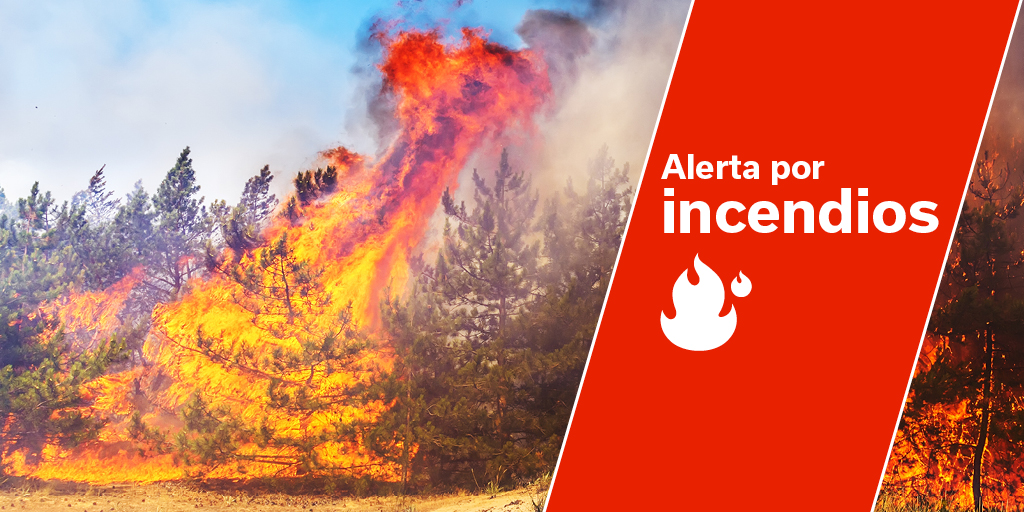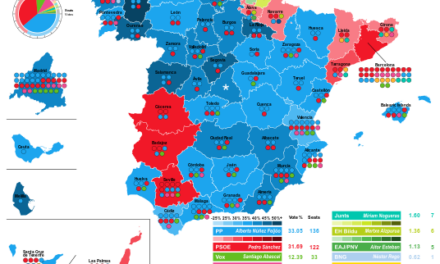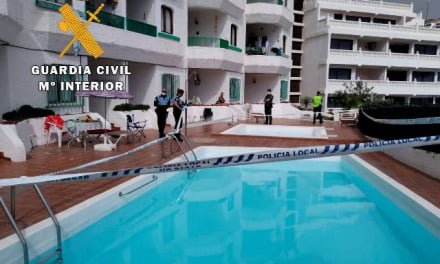Springtime has only just begun and already the temperatures, in the shade, on Gran Canaria have been repeatedly hitting the low to mid-thirties, which brings with it also a rising risk of Forest Fires and Wildfires. Here in the Canary Islands forest fire crews are well versed in tackling an occasional mountain blaze, with alert levels often following the basic informal rule of thumb, the so-called 30/30/30 rule, putting the authorities on alert whenever the temperature is set to rise above 30ºC in the shade, the humidity levels drop below 30% and sustained winds are forecast at faster than 30kmph. Common sense and preparation help the general population to avoid injury in the event of a fire taking hold.
The decision was made taking into account the most recent information available and as part of the INFOCA Autonomous Community of the Canary Islands’ Special Plan for Civil Protection and Emergency Attention due to Forest Fires.
The Alert is focused on the island of Gran Canaria, above elevations of 1,000m on the northern area of the island, and above elevation 400m on the east, south and west areas, with areas below that elevation designated as in Pre-Alert.
Caused by an expected episode of high and rising temperatures, potentially above 34ºC in inland areas of Gran Canaria, mainly on the west, south
and southeast slopes.
Moderate northeast winds will intensify throughout the day, with the potential to locally become very strong gusts as the day comes to a close, particularly in inland and summit zones.
The population have been urged to follow self-protection advice issued from the General Directorate of Security and Emergencies:
 Tips on forest fires
Tips on forest fires
Preventive tips
Do not throw lit cigarette butts or matches, either while walking, or out of the car window while driving.
Do not launch rockets, firecrackers, fireworks or other fire-containing devices in dangerous areas, even in an open field, or on agricultural land or, above all, not in residential areas surrounded by forests.
Never leave rubbish or debris in the forest. Use the appropriate collection services and containers.
Remove branches that touch the front of your house.
Have ready basic fire fighting tools (hoses, axes) and some reserve water.
If you have animals at home
Check beforehand that your animal is identified and that vaccinations and deworming are up to date in order to protect them and facilitate their accommodation in temporary facilities with other animals and/or people, as well as rapid recovery in case of loss.
Prepare an emergency backpack with a collapsible carrier, documentation for the animal (card or passport, potentially dangerous animal license and treatment history), containers with water and food for two or three days, collar (if possible reflective with a plate containing your name, a contact person and telephone number), leash, muzzle, poop bag and first aid kit if the animal needs treatment.
Evaluate in advance with which family member or friend in other areas that you may be able take care of the animal.
Make sure that your contact details are correctly updated in the Canary Animal Identification Registry, mainly landlines and mobile phones. It is very important in order to locate the owner of the animal in case of loss or other incidents that may occur.
Tips if surprised by a fire
Keep calm and do not spread rumours.
Call 1-1-2 and in any case follow the indications of the authorities.
If you have to evacuate, turn off the power and gas switches, take essentials (documentation, money and medicines) and go where the security services tell you.
If a fire surrounds the house, take refuge inside, close doors and windows and plug any holes.
Fill bathtubs and sinks with water, spray doors and windows with water, and place wet towels under doors.
Turn off all power supplies and protect yourself with cotton clothing. If there is a lot of smoke, you can leave the lights on and aim to breathe at ground level.
Go to the meeting point established by the authorities, where people will be separated from animals if necessary.
Try to use a single vehicle to evacuate the entire family, including the animals.
Leave in plenty of time to stagger the evacuation.
Follow recommended evacuation routes, avoiding shortcuts.
In open country, move away in the direction opposite to the wind and, if you need to, move towards an area that has already been burned.
Wet a handkerchief and cover your face to keep out smoke. Do not take refuge in wells or caves. Near the sea, get closer to the water and, if necessary, get in the water.
If you are in a car, take a break in a protected place, close the doors and windows, and stop the ventilation system in the car.
Turn on your headlights so you can be found in the smoke.
If you find a wild animal injured by a fire, wrap it in a blanket, towel or large piece of clothing, put it in a box (if it fits) or in the car and go to the nearest wildlife recovery centre. If you see that you cannot do it yourself, call the help services or contact the nearest wildlife recovery centre.
If you have animals at home
In case of evacuation, take the emergency backpack.
Leave a note/record on the door of the house that you have been evacuated with any animals.
Go with the animals to the affiliation points in shelters, refuges or authorised areas, following the instructions of the authorities.
Try to use a single vehicle to evacuate the entire family, including the animals.
Leave in plenty of time to stagger the evacuation.
Follow recommended evacuation routes, avoiding shortcuts.













